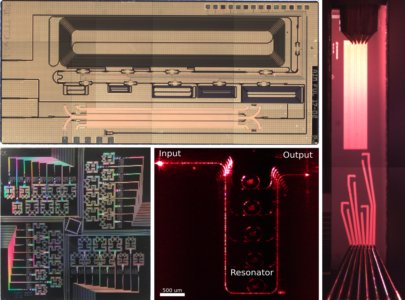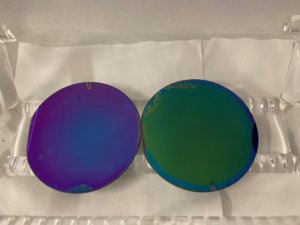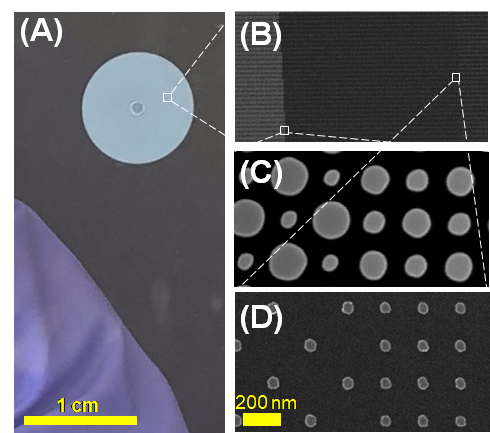Newsletter
In Physical Sciences Inc. (PSI) Optical Devices and Technology Group, Chris Evans, Principal Research Scientist, is leading recent growth in integrated photonics technologies. Analogous to conventional electronic circuits, these “circuits of light” bring new functionality in an unprecedented compact footprint in support of the National Quantum Initiative and National Security related missions. We are proud to be involved in multiple material systems, including silicon (Si), silicon nitride (SN), indium phosphide (InP), and thin-film lithium niobate (TFLN). These PSI Photonic Integrated Circuits (PICs) are enabling functions such as time delay for radar beam forming, efficient and compact frequency modulation and frequency shifting for atom-based quantum sensors, quantum time-bin encoding, integrated optical spectrometers, and orbital angular momentum states of light for improved underwater communications. Contributing to these efforts are: Kyle Dorsey, Principal Scientist; Brandon Young, Principal Engineer; Justin Brown, Principal Scientist; and Michal Cwik, Scientist.

PICs made out of (clockwise from upper left) Si, TFLN, TFLN (under test), and SN
The newly formed Structured Optical Materials Group, led by David Woolf, is pioneering work on engineered optical materials that create both new optical capability in existing form factors and existing optical capability functions in new form factors. For example, by incorporating a phase change material (PCM) such as vanadium oxide in a conventional thin-film optical coating stack, we create a surface whose emissivity, or thermal “color”, autonomously adjusts to stabilize its temperature. The examples pictured below are of PCM stacks formed on Si using an in-house process developed in a collaboration with PSI’s Materials Group. Key contributors include: Colin Hessel, Principal Research Scientist and AJ Wright, Senior Engineer. These components will be used to cover critical surfaces of a satellite to help the spacecraft passively regulate its internal temperature.

Two examples of PCM stacks formed on Si
Another promising engineered optical structure under development is the “metalens” or “metasurface”. In a metalens, the ray bending lens function of a conventional optic is achieved in a flat, and therefore, highly compact form factor by patterning a surface with a carefully chosen and positioned set of shapes that achieve the desired optical phase function. The 1 cm diameter flat metalens below was fabricated in an effort under DARPA sponsorship. The inset panels show successively larger magnification until the pattern is visible only when observed with an electron microscope. This metalens is designed for operation in the visible wavelength regime, but this approach is also being applied in the infrared and will play a critical role in the upcoming DARPA ENVision program to develop the next generation night vision technology for the U.S. military. In addition to collaborations with key academic groups, PSI staff contributing to this technology area include: Kyle Dorsey, Principal Scientist; Brandon Young, Principal Engineer; Rick Wainner, Principal Research Scientist; Joe Goodwin, Principal Scientist; and Jon Rameau, Principal Research Scientist.
For more information on PSI’s Photonics Enterprise, please contact Joel Hensley, Vice President, Photonics

A 1 cm diameter flat metalens
Contract News
PSI recently received the following research contracts:
“BioSIGMA: Sensor Expansion and Turbulence Modeling” from the Defense Advanced Research Projects Agency (DARPA)
“Quantum-memory Wavelength-Division Multiplexing (QWDM)” from the National Aeronautics and Space Administration (NASA)
“One-dimensional Convolution Neural Network for Improved Training Time and Standardization in Spectral Class” from the U.S. Department of Homeland Security
“Wearable High-Power Microwave Exposure Sensor” and “Low-shot Object Tracking and Targeting Algorithms for Next Generation Combat Vehicles” from the U.S. Army
Physical Sciences Inc. | contact@psicorp.com | (978) 689-0003 |
© 2021 Physical Sciences Inc.




